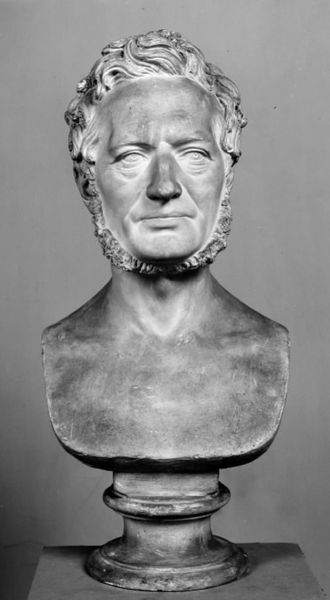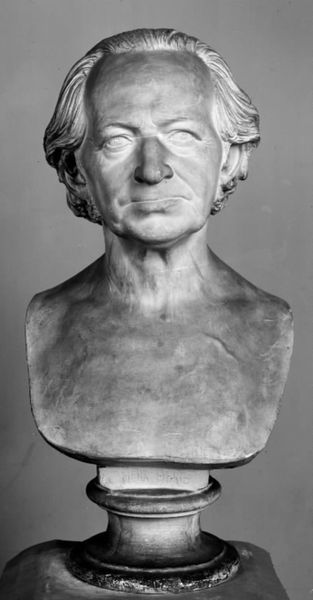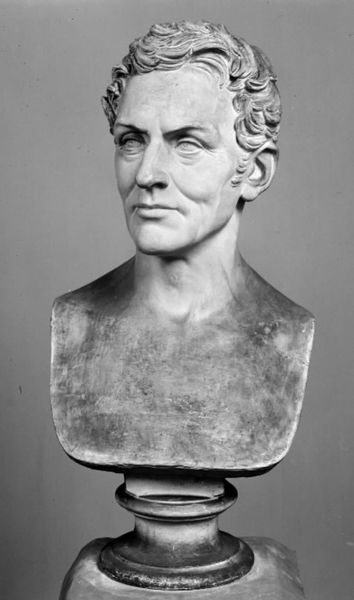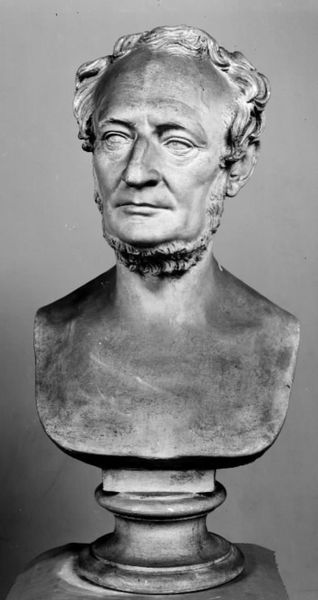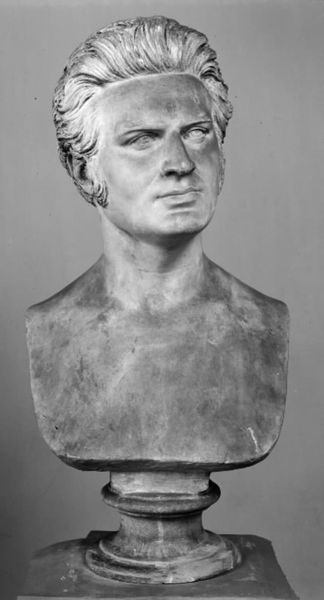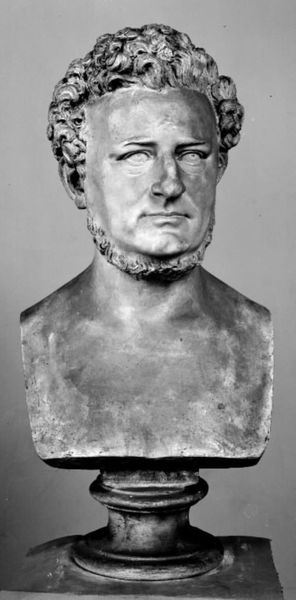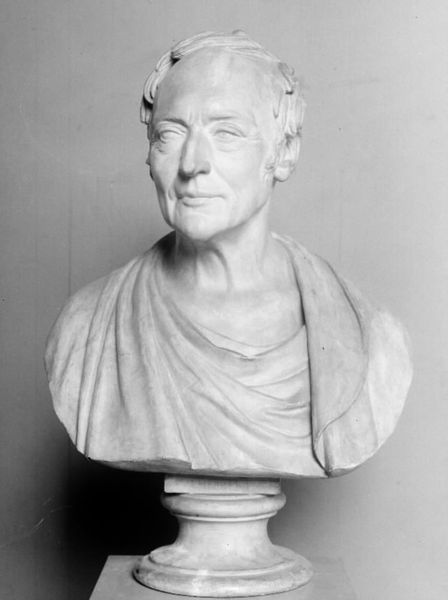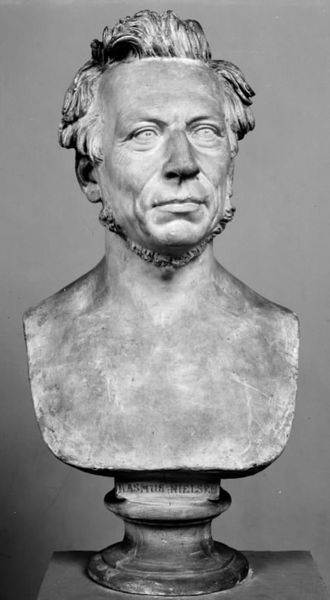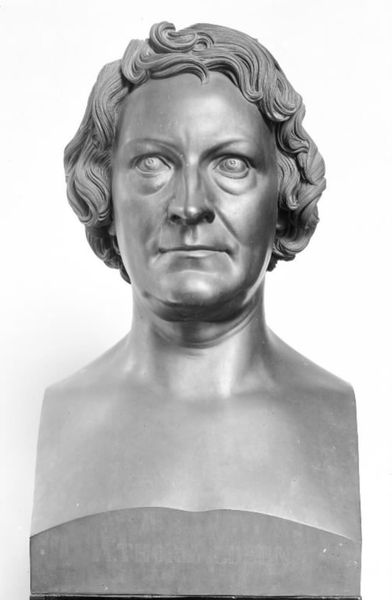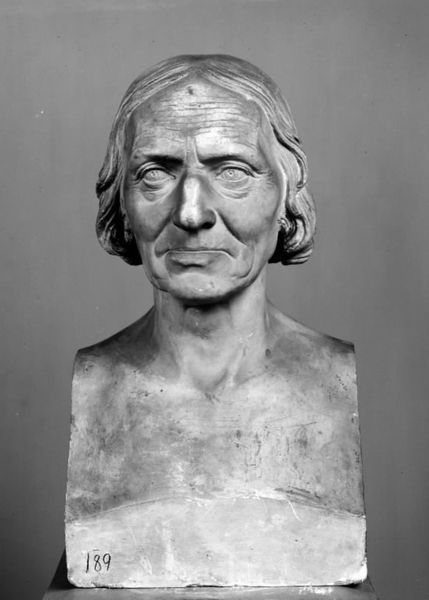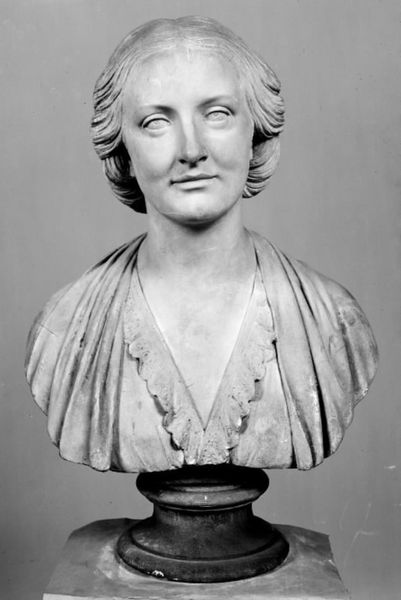
Dimensions: 67.3 cm (height) (Netto)
Curator: Here we have H.W. Bissen's marble bust, "Geolog og kemiker, professor J.G. Forchhammer," created in 1866. It resides here at the SMK, the National Gallery of Denmark. Editor: Immediately, I'm struck by the almost severe realism of the piece. It's unidealized; you see every wrinkle and furrow. There's a gravitas in the figure, almost mournful. Curator: Indeed. Bissen was a key figure in Danish Neoclassicism and later adopted a realist approach. This work exemplifies his commitment to portraying the sitter's character. Forchhammer was a highly respected geologist and chemist; Bissen likely aimed to convey his intellectual rigor. Editor: The decision to use marble seems particularly loaded. Marble connects him to traditions of representing power, wisdom, and status. Marble also historicizes his figure into this canon of powerful thinkers throughout history. I wonder if that elevated the cultural value of the sciences at the time. Curator: I think that’s right. Remember the period. Museums were gaining prominence, creating public narratives of national progress, often celebrated through depictions of key intellectual figures. Sculpture, particularly marble portraiture, held a prominent public role as honorific. Editor: In that sense, a portrait like this serves to solidify a particular kind of identity in the cultural narrative: intellectual, masculine, and inherently valuable. There is an inherent power dynamic imbued here as Bissen depicts Forchhammer as almost eternally immortal through marble. Curator: Exactly. But notice also Bissen's detail; how he contrasts Forchhammer’s stern features with the almost tenderly carved hair, adding complexity. He presents the man as both an intellectual authority, yet not untouchable or severe. Editor: It prompts us to reflect on who gets memorialized and why, even now. Whose contributions do we choose to celebrate in a similar capacity and how does that play into contemporary sociopolitical issues of today? Curator: Yes. These works force us to acknowledge those institutional legacies and open up broader questions regarding whose histories get prominently displayed in institutions. Editor: It pushes beyond mere aesthetics and confronts historical values which affect today. Thanks for highlighting that.
Comments
No comments
Be the first to comment and join the conversation on the ultimate creative platform.
